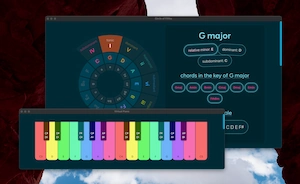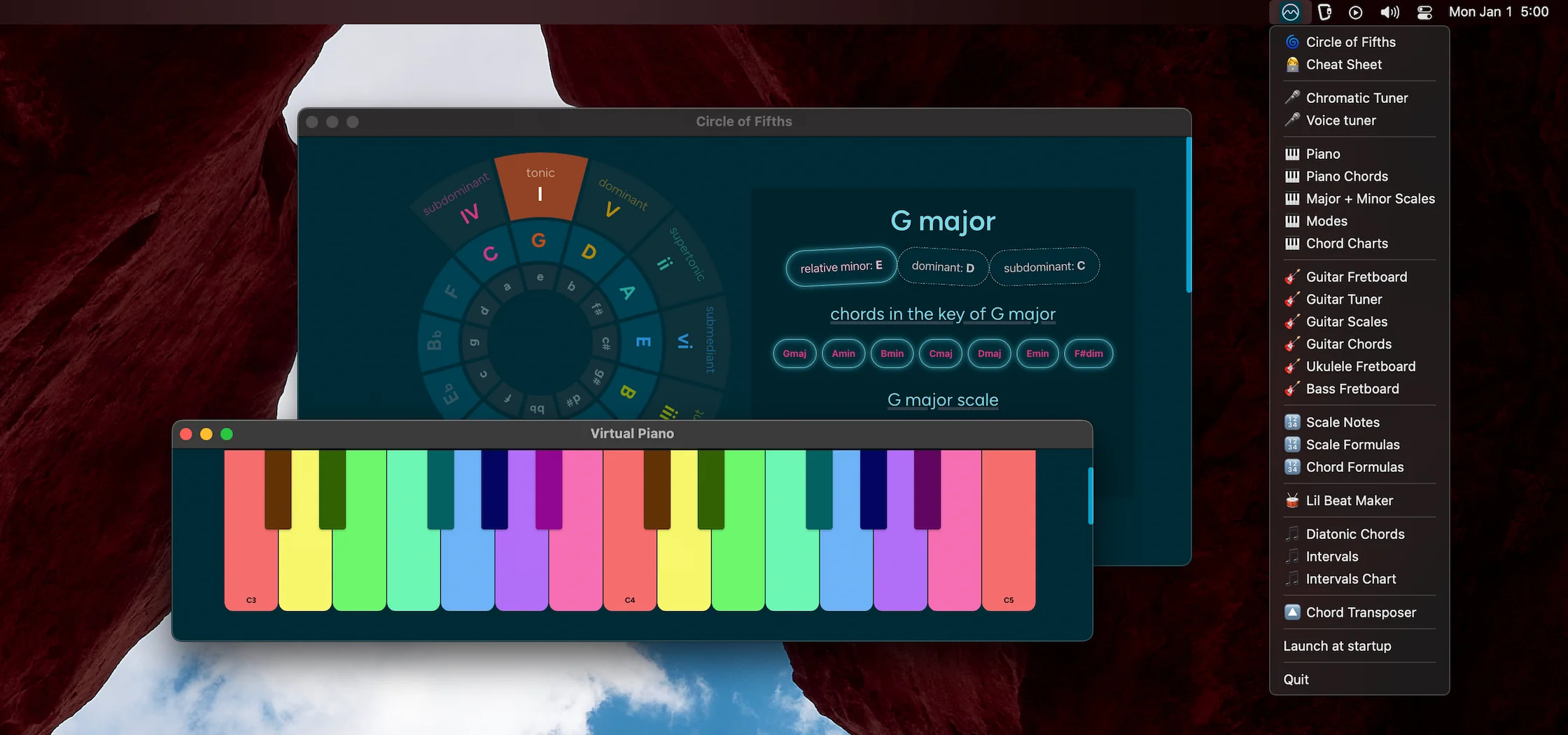Guitar Chords: Diagrams with Finger Positions
🎸 Quickly reference guitar chord diagrams for popular chords at different
positions on the fretboard.
Just select a root note and a chord type and you'll get diagrams for that
chord at common positions. You'll find both open chords and barre chords.
These diagrams use
standard tuning (E A D G B E).
You'll find diagrams for major, minor, augmented, diminished, dominant, 5th,
6th, suspended and add chords, as well as the 7th chords for many of these
same chord types.
You may also like the one-pager with
basic guitar chords,
the tool for guitar scales, the
online tuner, the
virtual guitar fretboard and the similar tool
for ukulele chords.
Select a Chord:
chord:
How to Read Guitar Chord Diagrams
Here are a few easy pointers on how to read guitar chord diagrams when the diagrams are in their default vertical position:
- Each vertical line represents a string on the fretboard, the low E is the first vertical line and the high E is the last vertical line.
- Each horizontal line represents a fret mark on the fretboard
- Each dot represents a finger placement on that fret. The number inside a dot represents which finger should be used
- A note like 3fr means that the diagram starts on the 3rd fret
- A thicker first horizontal line (representing the guitar nut) means the diagram starts on the 1st fret
- A 'O' at the top of one of the strings means that the string stays open
- A 'X' at the top of one of the strings means that the string isn't strummed



